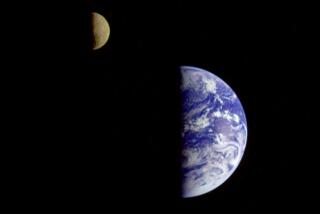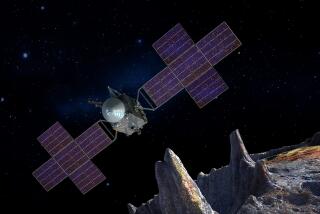NASA releases best images yet of a near-Earth asteroid [Video]
- Share via
An asteroid nicknamed “the beast” zipped by Earth last weekend, and NASA’s telescopes were ready.
The video below represents some of the most detailed images of a near-Earth asteroid ever taken, according to the space agency.
The asteroid officially known as 2014 HQ124 was first discovered in April, soon before its closest approach to Earth.
On June 6, it came as close as 776,000 miles from Earth, or a little more than three times the distance between Earth and the moon.
The images above were taken a few days later, when the asteroid was between 864,000 and 902,000 miles from Earth.
What they revealed was an asteroid at least 1,200 feet long and shaped like a Teletubby, with a small lobe on top and a larger lobe on the bottom.
Lance Benner, a research scientist at the Jet Propulsion Laboratory, said the two lobes of the object may once have been separate, but they are clearly touching now.
“Quite a few that we’ve seen have looked like that,” he said. “Maybe 1 out of 6.”
Scientists also spotted what looks like a cavity in the larger of the two lobes, and they were able to estimate that the asteroid completed a full rotation about once every 24 hours.
To get these detailed images, the researchers paired the 23-foot Deep Space Network antenna at Goldstone, Calif., with two other radio telescopes --the Arecibo radio telescope in Puerto Rico and a smaller radio telescope in California. The Goldstone antenna beamed a signal at the asteroid, and an antenna on one of the other two telescopes received the radar reflection.
“By itself the Goldstone antenna can obtain images that show features as small as the width of a traffic lane on the highway,” said Benner in a statement. “With Arecibo now able to receive our highest-resolution Goldstone signals, we can create a single system that improves the overall quality of the images.”
That means, there are more, clearer images of near-Earth asteroids to come.
For more amazing science news, follow me @DeborahNetburn







